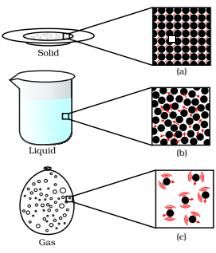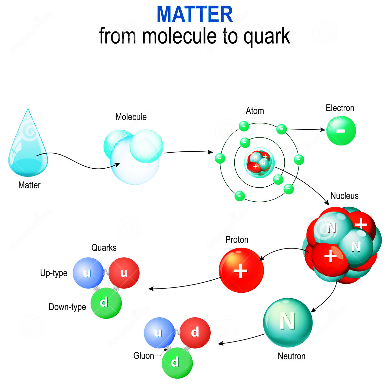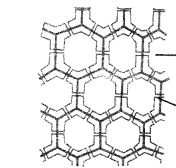If you are wondering how to solve class 9 science case study questions, then myCBSEguide is the best platform to choose. With the help of our well-trained and experienced faculty, we provide solved examples and detailed explanations for the recently added Class 9 Science case study questions.
Class 9 Science Case Study Questions
You can find a wide range of solved case studies on myCBSEguide, covering various topics and concepts. Class 9 Science case studies are designed to help you understand the application of various concepts in real-life situations.
The rationale behind Science
Science is crucial for Class 9 students’ cognitive, emotional, and psychomotor development. It encourages curiosity, inventiveness, objectivity, and aesthetic sense.
In the upper primary stage, students should be given a variety of opportunities to engage with scientific processes such as observing, recording observations, drawing, tabulating, plotting graphs, and so on, whereas in the secondary stage, abstraction and quantitative reasoning should take a more prominent role in science teaching and learning. As a result, the concept of atoms and molecules as matter’s building units, as well as Newton’s law of gravitation, emerges.
Science is important because it allows Class 9 Science students to understand the world around us. It helps to find out how things work and to find solutions to problems at the Class 9 Science level. Science is also a source of enjoyment for many people. It can be a hobby, a career, or a source of intellectual stimulation.
Case study questions in Class 9 Science
The inclusion of case study questions in Class 9 science CBSE is a great way to engage students in critical thinking and problem-solving. By working through real-world scenarios, Class 9 Science students will be better prepared to tackle challenges they may face in their future studies and careers. Class 9 Science Case study questions also promote higher-order thinking skills, such as analysis and synthesis. In addition, case study questions can help to foster creativity and innovation in students. As per the recent pattern of the Class 9 Science examination, a few questions based on case studies/passages will be included in the CBSE Class 9 Science Paper. There will be a paragraph presented, followed by questions based on it.
Examples of Class 9 science class case study questions
Class 9 science case study questions have been prepared by myCBSEguide’s qualified teachers. Class 9 case study questions are meant to evaluate students’ knowledge and comprehension of the material. They are not intended to be difficult, but they will require you to think critically about the material. We hope you find Class 9 science case study questions beneficial and that they assist you in your exam preparation.
The following are a few examples of Class 9 science case study questions.
Class 9 science case study question 1
Read the passage and answer any four questions:
Gases are highly compressible as compared to solids and liquids. The liquefied petroleum gas (LPG) cylinder that we get in our home for cooking or the oxygen supplied to hospitals in cylinders is compressed gas. Compressed natural gas (CNG) is used as fuel these days in vehicles. The liquid takes up the shape of the container in which they are kept. Liquids flow and change shape, so they are not rigid but can be called fluid. Solids and liquids can diffuse into liquids. The aquatic animals can breathe underwater. The rate of diffusion of liquids is greater than solid.

- Why Compressed natural gas (CNG) is used as fuel these days in vehicles?
- due to its high compressibility
- large volumes of a gas can be compressed into a small cylinder
- transported easily
- all of these
- liquids have no fixed _______ but have a fixed________ .
- shape, volume
- volume, shape
- shape, size
- size, shape
- The aquatic animals can breathe underwater due to
- the presence of dissolved carbon dioxide in water
- the presence of dissolved oxygen in the water
- the presence of dissolved Nitrogen in the water
- all of these
- The rate of diffusion of liquids is greater than solid due to
- liquid particles move freely
- liquid have greater space between each other
- both (a) and (b)
- none of these
- The property of flow is unique to fluids. Which one of the following statements is correct?
- Only gases behave like fluids
- Gases and solids behave like fluids
- Gases and liquids behave like fluids
- Only liquids are fluids
Answer Key:
- (d) all of these
- (a) shape, volume
- (b) the presence of dissolved oxygen in the water
- (c) both (a) and (b)
- (c) Gases and liquids behave like fluids
Class 9 science case study question 2
Read the passage and answer any four questions:
Atom can be described as in building houses the building blocks of all matter are atoms. A molecule is in general a group of two or more atoms that are chemically bonded together, that is, tightly held together by attractive forces. A molecule can be defined as the smallest particle of an element or a compound that is capable of independent existence and shows all the properties of that substance. Atoms of the same element or of different elements can join together to form a molecule. The number of atoms constituting a molecule is known as its atomicity. Metals and some other elements, such as carbon, do not have a simple structure but consist of a very large and indefinite number of atoms bonded together.

- How many times an atom of sulphur is heavier than an atom of carbon?
- 32 times
- 12 times
- 8/3 times
- 12/32 times
- Which of the following has a maximum number of the atom?
- 18 g H2O
- 18 g of O2
- 18 g of CO2
- 18 g of CH4
- Which has the maximum number of molecules?
- 1 g of CO2
- 1 g of N2
- 1 g of H2
- 1 g of CH4CH4
- Which of the following correctly represents 360 g of water?
- 2 moles of H2O
- 20 moles of water
- 6.022 × 1023 molecules of water
- 1.2044 × 1025 molecules of water
- (I) only
- (I) and (IV)
- (II) and (III)
- (II) and (IV)
- The molecule having atomicity of 4 is:
- Sulphate molecule
- Ozone molecule
- Phosphorus molecule
- Methane molecule
Answer Key:
- (c) 8/3 times
- (d) 18g of CH4
- (c) 1g of H2
- (d) (II) and (IV)
- (c) phosphorus molecule
Class 9 science case study question 3
A few layers of cells beneath the epidermis are generally simple permanent tissue. Parenchyma is the most common simple permanent tissue. It consists of relatively unspecialized cells with thin cell walls. They are living cells. Collenchyma allows bending of various parts of the plant-like tendrils and stems of climbers without breaking. Sclerenchyma tissue makes the plant hard and stiff. We have seen the husk of a coconut. It is made of sclerenchymatous tissue. They are long and narrow as the walls are thickened due to lignin. The tissue is present in stems, around vascular bundles, in the veins of leaves and in the hard covering of seeds and nuts.

- The flexibility in plants is due to
- collenchyma
- parenchyma
- chlorenchyma
- aerenchyma
- Function of aerenchyma:
- It performs photosynthesis
- It helps the aquatic plant to float
- It provides mechanical support
- none of these
- Which of the following tissues has dead cells?
- Parenchyma
- Sclerenchyma
- Collenchyma
- Epithelial tissue
- Which of the following statement is incorrect
- Parenchyma tissues have intercellular spaces.
- Collenchymatous tissues are irregularly thickened at corners.
- Apical and intercalary meristems are permanent tissues.
- Meristematic tissues, in its early stage, lack vacuoles, muscles
- (I) and (II)
- (II) and (III)
- (III) and (I)
- Only (III)
- Which of the following is the function of the tissue which is shown in the below diagram?

- Transpiration
- Provides mechanical support
- Provides strength to the plant parts
- None of these
Answer Key:
- (a) Collenchyma
- (b) help aquatic plant to float
- (b) Sclerenchyma
- (d) Only (III)
- (c) provide strength to plant parts
Cracking Class 9 Science Case Study Questions
There is no one definitive answer to Class 9 Science case study questions. Every case study is unique and will necessitate a unique strategy. There are, nevertheless, certain general guidelines to follow while answering case study questions.
- To begin, double-check that you understand the Class 9 science case study questions. Make sure you understand what is being asked by reading it carefully. If you’re unclear, seek clarification from your teacher or tutor.
- It’s critical to read the Class 9 Science case study material thoroughly once you’ve grasped the question. This will provide you with a thorough understanding of the problem as well as the various potential solutions.
- Brainstorming potential solutions with classmates or other students might also be beneficial. This might provide you with multiple viewpoints on the situation and assist you in determining the best solution.
- Finally, make sure your answer is presented simply and concisely. Make sure you clarify your rationale and back up your claim with evidence.
A look at the Class 9 Science Syllabus
The CBSE class 9 science syllabus provides a strong foundation for students who want to pursue a career in science. The topics are chosen in such a way that they build on the concepts learned in the previous classes and provide a strong foundation for further studies in science. The table below lists the topics covered in the Class 9 Science syllabus of the Central Board of Secondary Education (CBSE). As can be seen, the Class 9 science syllabus is divided into three sections: Physics, Chemistry and Biology. Each section contains a number of topics that Class 9 science students must study during the course.
CBSE Class 9 Science (Code No. 086)
| Unit No. | unit | Marks |
| I | Matter- Its Nature and Behaviour | 25 |
| II | Organization in the Living World | 22 |
| III | Motion, Force and Work | 27 |
| IV | Food; Food Production | 06 |
| Total | 80 | |
| Internal assessment | 20 | |
| Grand Total | 100 |
Theme: Materials
Unit I: Matter-Nature and Behaviour
Definition of matter; solid, liquid and gas; characteristics – shape, volume, density; change of state-melting (absorption of heat), freezing, evaporation (cooling by evaporation), condensation, sublimation.
Nature of matter: Elements, compounds and mixtures. Heterogeneous and homogenous mixtures, colloids and suspensions.
Particle nature and their basic units: Atoms and molecules, Law of constant proportions, Atomic and molecular masses. Mole concept: Relationship of mole to mass of the particles and numbers.
Structure of atoms: Electrons, protons and neutrons, valency, the chemical formula of common compounds. Isotopes and Isobars.
Theme: The World of the Living
Unit II: Organization in the Living World
Cell – Basic Unit of life: Cell as a basic unit of life; prokaryotic and eukaryotic cells, multicellular organisms; cell membrane and cell wall, cell organelles and cell inclusions; chloroplast, mitochondria, vacuoles, endoplasmic reticulum, Golgi apparatus; nucleus, chromosomes – basic structure, number.
Tissues, Organs, Organ System, Organism:
Structure and functions of animal and plant tissues (only four types of tissues in animals; Meristematic and Permanent tissues in plants).
Theme: Moving Things, People and Ideas
Unit III: Motion, Force and Work
Motion: Distance and displacement, velocity; uniform and non-uniform motion along a straight line; acceleration, distance-time and velocity-time graphs for uniform motion and uniformly accelerated motion, derivation of equations of motion by graphical method; elementary idea of uniform circular motion.
Force and Newton’s laws: Force and Motion, Newton’s Laws of Motion, Action and Reaction forces, Inertia of a body, Inertia and mass, Momentum, Force and Acceleration. Elementary idea of conservation of Momentum.
Gravitation: Gravitation; Universal Law of Gravitation, Force of Gravitation of the earth (gravity), Acceleration due to Gravity; Mass and Weight; Free fall.
Floatation: Thrust and Pressure. Archimedes’ Principle; Buoyancy.
Work, energy and power: Work done by a Force, Energy, power; Kinetic and Potential energy; Law of conservation of energy.
Sound: Nature of sound and its propagation in various media, speed of sound, range of hearing in humans; ultrasound; reflection of sound; echo.
Theme: Food
Unit IV: Food Production
Plant and animal breeding and selection for quality improvement and management; Use of fertilizers and manures; Protection from pests and diseases; Organic farming.
PRESCRIBED BOOKS:
- Science-Textbook for class IX-NCERT Publication
- Assessment of Practical Skills in Science-Class IX – CBSE Publication
- Laboratory Manual-Science-Class IX, NCERT Publication
- Exemplar Problems Class IX – NCERT Publication
myCBSEguide: A true helper
There are numerous advantages to using myCBSEguide to achieve the highest results in Class 9 Science.
- myCBSEguide offers high-quality study materials that cover all of the topics in the Class 9 Science curriculum.
- myCBSEguide provides practice questions and mock examinations to assist students in the best possible preparation for their exams.
- On our myCBSEguide app, you’ll find a variety of solved Class 9 Science case study questions covering a variety of topics and concepts. These case studies are intended to help you understand how certain principles are applied in real-world settings
- myCBSEguide is that the study material and practice problems are developed by a team of specialists who are always accessible to assist students with any questions they may have. As a result, students may be confident that they will receive the finest possible assistance and support when studying for their exams.
So, if you’re seeking the most effective strategy to study for your Class 9 Science examinations, myCBSEguide is the place to go!

Test Generator
Create question paper PDF and online tests with your own name & logo in minutes.
Create Now
Learn8 App
Practice unlimited questions for Entrance tests & government job exams at ₹99 only
Install Now